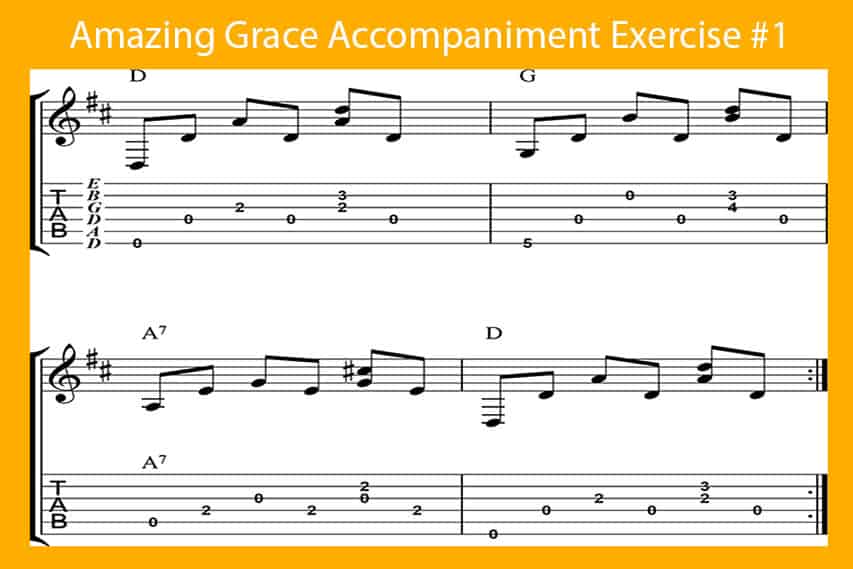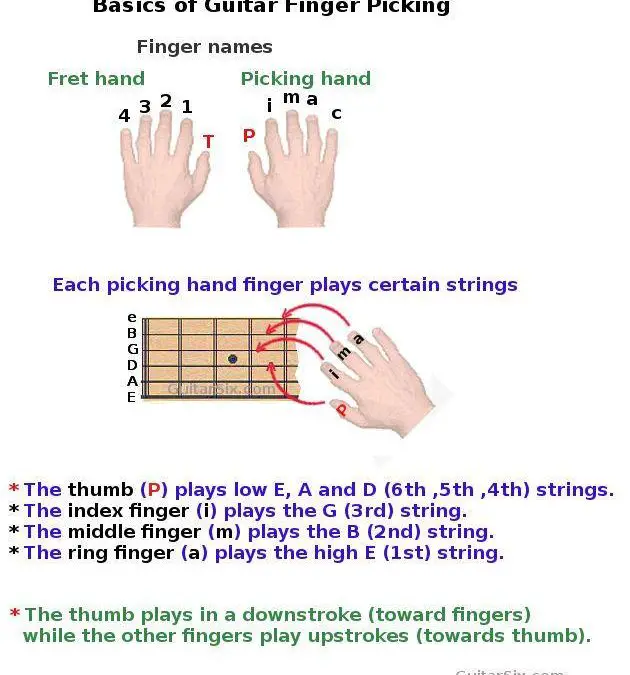Are you tired of feeling like a clumsy cowpoke fumbling around on your guitar strings? Ready to ditch those bulky guitar picks and master the elegant art of fingerpicking like a true troubadour? Well saddle up, partner, because we’re about to show you how to pluck and strum your way to fingerpicking greatness! Ready your digits and get ready to strum with finesse as we guide you through the wild and wonderful world of fingerpicking mastery. It’s time to channel your inner guitar guru and unleash your inner shredding cowboy!
Contents
- 1 Understanding the Basics of Guitar Fingerpicking
- 2 The Essential Fingerpicking Patterns Every Guitarist Should Know
- 3 Refining Your Technique: Tips for Smooth and Precise Fingerpicking
- 4 Developing Speed and Agility in Fingerpicking Practice
- 5 Exploring the Nuances of Dynamic and Expressive Fingerpicking
- 6 Incorporating Advanced Fingerpicking Styles and Techniques
- 7 Challenges in Fingerpicking and How to Overcome Them
- 8 FAQs
- 9 Rock on with your fingerpicking skills!
Understanding the Basics of Guitar Fingerpicking
So you’ve decided to take the plunge into the world of guitar fingerpicking – congratulations! This style of playing may seem daunting at first, but with a little practice and patience, you’ll be charming audiences with your nimble fingers in no time.
First things first, familiarize yourself with the basic fingerpicking patterns. Start with the timeless Travis picking pattern, which involves alternating bass notes with your thumb and playing melody notes with your fingers. Once you’ve mastered that, you can move on to more complex patterns like the clawhammer or flamenco techniques.
Next, make sure your nails are in tip-top shape. A good set of nails can make all the difference when it comes to producing clear, crisp tones. Invest in a quality nail file and keep those nails trimmed and polished – your guitar will thank you.
Lastly, don’t be afraid to experiment and make the technique your own. Fingerpicking is as much about creativity as it is about skill, so feel free to add your own flair to classic patterns. Remember, there are no rules in music – except maybe don’t play Wonderwall at parties.

The Essential Fingerpicking Patterns Every Guitarist Should Know
So, you’ve decided to dip your toe into the world of fingerpicking on the guitar. Congratulations! You’re about to enter a whole new realm of dexterity and coordination. But fear not, dear guitarist, for I am here to guide you through some essential fingerpicking patterns that every player should know.
First up, we have the Travis Picking pattern. Named after the legendary country guitarist Merle Travis, this pattern involves alternating between the bass notes and melody notes with your thumb and fingers. It’s a great way to develop independence in your picking hand and can be used in a wide variety of musical styles.
Next, we have the Arpeggio pattern. This pattern involves playing the notes of a chord individually, creating a flowing, cascading effect. It’s a great way to create lush, harmonious sounds on the guitar and can be used to add depth and complexity to your playing.
And finally, we have the Classical Picking pattern. This pattern involves using your thumb and fingers to pluck individual strings, often in a sequence of repeating notes. It’s a technique commonly used in classical guitar music and can add a touch of elegance and sophistication to your playing.

Refining Your Technique: Tips for Smooth and Precise Fingerpicking
So, you’ve got the basics of fingerpicking down but you’re looking to take your skills to the next level? Look no further! Here are some tips to help you refine your technique and achieve that smooth and precise fingerpicking sound you’ve been dreaming of.
First and foremost, make sure you’re using the right hand position. Keep your wrist relaxed and your fingers arched, hovering just above the strings. This will not only help you achieve a better tone but also prevent unnecessary strain on your hand.
Next, focus on your fingerpicking patterns. Practice different patterns over and over until they become second nature. Mix it up with some alternating bass notes or triplets to keep things interesting.
Don’t forget about dynamics! Use varying pressure and speed to create a more dynamic and expressive sound. Experiment with playing softly and then gradually increasing your volume for a dramatic effect.

Developing Speed and Agility in Fingerpicking Practice
When it comes to fingerpicking practice, speed and agility are key components to master. To develop lightning-fast fingers and nimble movements, consider incorporating the following tips into your daily practice routine:
- Start slow and steady: Rome wasn’t built in a day, and neither will your fingerpicking skills. Begin by practicing at a comfortable pace, focusing on accuracy and technique before ramping up the speed.
- Use a metronome: A metronome is your best friend when it comes to building speed and precision in your fingerpicking. Set the metronome at a moderate tempo and gradually increase the speed as you become more comfortable.
- Focus on finger independence: Each finger plays a crucial role in fingerpicking, so make sure to work on developing the independence of each digit. Practice exercises that target individual fingers to improve coordination and dexterity.
Additionally, don’t forget to incorporate some fun and challenging exercises into your practice routine to keep things interesting. Try playing scales and arpeggios in different patterns and sequences to push your fingerpicking abilities to the next level. Experiment with different techniques, such as double thumbing or percussive slaps, to add flair to your playing.

Exploring the Nuances of Dynamic and Expressive Fingerpicking
So, you think you’ve got what it takes to master the art of dynamic and expressive fingerpicking, huh? Well, buckle up, buttercup, because this ain’t your grandma’s knitting circle. This is a wild ride through the lush landscapes of musical intricacy and flair.
First things first, let’s talk about the importance of **dynamics** in fingerpicking. Sure, you can pluck away at those strings like a robot, but where’s the fun in that? To truly make your guitar sing, you’ve got to play with feeling and finesse. Soft whispers and thunderous roars should be at your fingertips.
Now, onto the **expressiveness** of fingerpicking. This ain’t no fingerpainting kindergarten class, folks. We’re talking about conveying emotions, telling stories, and making hearts swoon with every note you pluck. Each melody should be like a Shakespearean soliloquy, leaving your audience captivated and wanting more.
So, grab your guitar, take a deep breath, and plunge headfirst into the mesmerizing world of dynamic and expressive fingerpicking. Remember, the journey may be challenging, but the rewards are oh so sweet. Now go forth and make those strings sing like never before!
Incorporating Advanced Fingerpicking Styles and Techniques
So, you think you have what it takes to incorporate advanced fingerpicking styles and techniques into your playing? Well, get ready to level up your guitar game! With these tips and tricks, you’ll be fingerpicking like a pro in no time.
First off, let’s talk about the importance of finger positioning. Make sure your fingers are properly arched and that your nails are trimmed just right. This will not only improve your sound quality but also prevent any unwanted buzzing or muting of the strings.
Next, experiment with different fingerpicking patterns. Don’t be afraid to try out some unconventional techniques – who knows, you might stumble upon your own signature style! And remember, practice makes perfect. So keep at it, even when your fingers feel like they’re about to fall off.
Lastly, don’t forget to have fun with it! should be a creative and enjoyable process. So, grab your guitar, unleash your inner rockstar, and get ready to wow everyone with your newfound skills!
Challenges in Fingerpicking and How to Overcome Them
When it comes to fingerpicking, there are a few challenges that most guitarists face at some point. One common issue is keeping a consistent rhythm, with fingers getting tangled and playing the wrong strings. It’s like trying to pat your head and rub your stomach at the same time – tricky!
Another challenge is finger fatigue. After a long practice session, your fingers can feel like they’ve just run a marathon. Sometimes they just don’t want to cooperate and hit the strings with the same strength or accuracy. It’s like they’re on strike!
And let’s not forget about finger independence. Sometimes it feels like your fingers are conspiring against you, refusing to move independently and making your playing sound like a mess. It’s like they’re playing a prank on you!
To overcome these challenges, it’s important to practice regularly and focus on improving your technique. Here are a few tips to help you out:
- Use a metronome: This will help you keep a steady rhythm and improve your timing.
- Work on finger strength: Practice exercises to strengthen your fingers and improve your dexterity.
- Focus on finger independence: Practice different fingerpicking patterns to improve coordination between your fingers.
FAQs
What is fingerpicking and why is it important for guitar players?
Fingerpicking is a technique in which the player uses their fingers to pluck the strings of the guitar, rather than using a pick. It is important for guitar players because it allows for more intricate and nuanced playing, creating a richer and more dynamic sound.
How can I improve my fingerpicking speed and accuracy?
Improving your fingerpicking speed and accuracy takes practice, practice, practice! Start slow and gradually increase your speed as you become more comfortable. Focus on keeping your fingers close to the strings and using a light touch to minimize excess movement.
Are there any exercises or drills that can help me master fingerpicking?
Yes, there are many exercises and drills that can help you improve your fingerpicking technique. Try practicing scales, arpeggios, and simple picking patterns to build dexterity and strength in your fingers. Don’t forget to mix it up and challenge yourself with new patterns and variations.
How can I choose the right fingerpicking pattern for a particular song?
Choosing the right fingerpicking pattern for a song can depend on the style and feel you want to convey. Experiment with different patterns and see what works best for the song you are playing. Don’t be afraid to get creative and make the song your own with your unique fingerpicking style.
What are some tips for staying relaxed while fingerpicking?
Staying relaxed while fingerpicking is key to maintaining speed and accuracy. Make sure to sit or stand in a comfortable position, with your shoulders relaxed and your wrists in a neutral position. Take breaks when needed and remember to breathe – tension in your body will only hinder your playing.
Rock on with your fingerpicking skills!
Congratulations on taking the leap into mastering the art of guitar fingerpicking! Now that you’ve learned some sweet techniques and put in the practice time, it’s time to show off your newfound skills. So grab your guitar, hit the stage, and rock on like the fingerpicking superstar you are! Keep practicing, keep perfecting, and remember to shred with style and plenty of attitude. Who knows, maybe you’ll become the next fingerpicking legend!



